

Buffalo
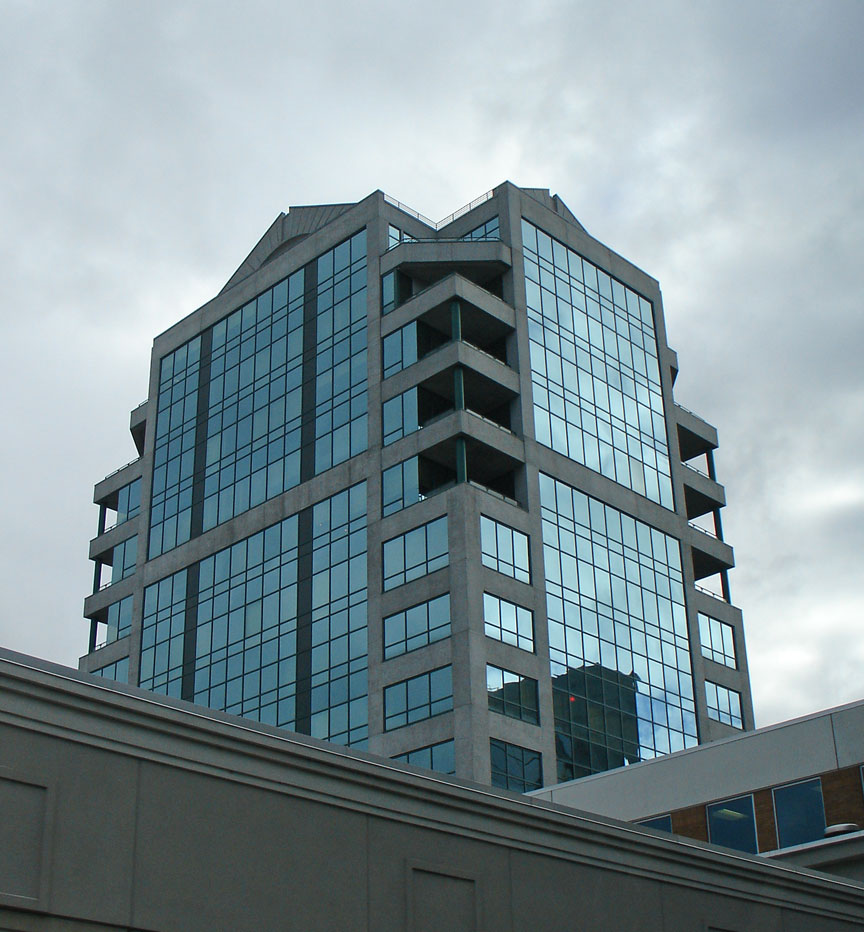
Buffalo
Key Center
Buffalo is the second most populous city in the state of New York, behind New York City. Located in Western New York on the eastern shores of Lake Erie and at the head of the Niagara River across from Fort Erie, Ontario, Buffalo is the principal city of the Buffalo-Niagara Falls metropolitan area and the seat of Erie County. The city itself has a population of 292,648 (2000 Census), and the Buffalo–Niagara–Cattaraugus Combined Statistical Area is home to 1,254,066 residents.

Originating around 1789 as a small trading community near the eponymous Buffalo
Creek, Buffalo grew quickly after the opening of the Erie Canal in 1825, with
the city as its western terminus. By 1900, Buffalo was the 8th largest city in
the country, and went on to become a major railroad hub, the largest
grain-milling center in the country, and the home of the largest steel-making
operation in the world. The latter part of the 20th Century saw a reversal of
fortunes: Great Lakes shipping was rerouted by the opening of the St. Lawrence
Seaway, and steel mills and other heavy industry relocated to places such as
China. With the start of Amtrak in the 1970s, Buffalo Central Terminal was also
abandoned, and trains were rerouted to nearby Depew, New York (Buffalo-Depew)
and Exchange Street Station. By 1990 the city had fallen back below its 1900
population levels; however, the city covers a small land area of 40.6 sq mi (105
km2) relative to most top 50 metropolitan areas in the United States.
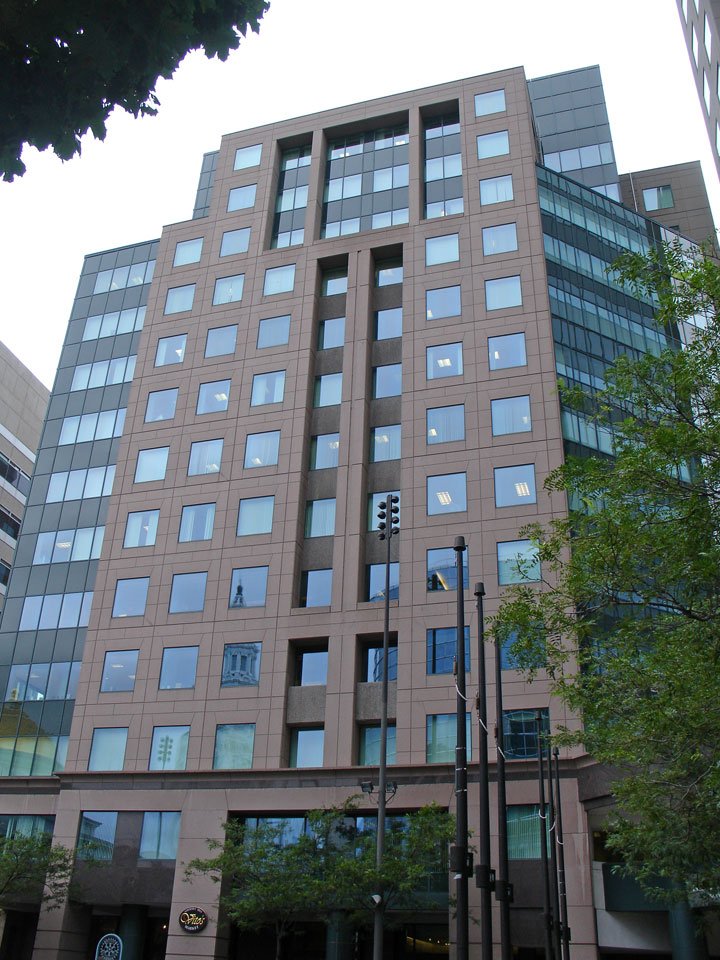
One of Buffalo's many monikers is the City of Trees, which describes the abundance of green in the city. In fact, Buffalo has more than 20 parks with multiple ones being accessible from any part of the city.
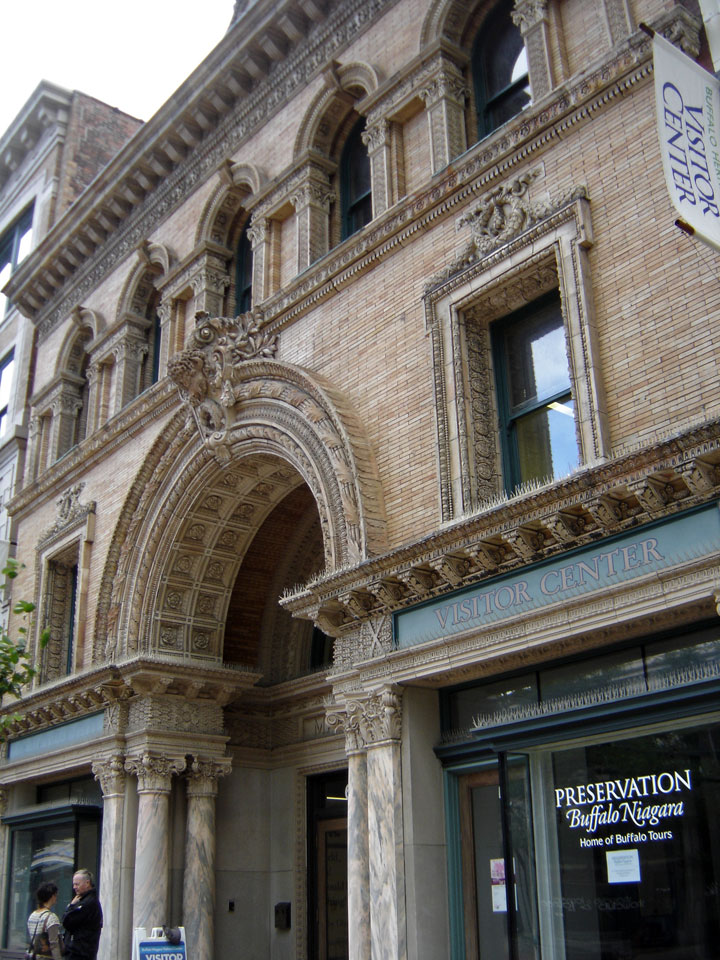
Market Arcade Visitors Center
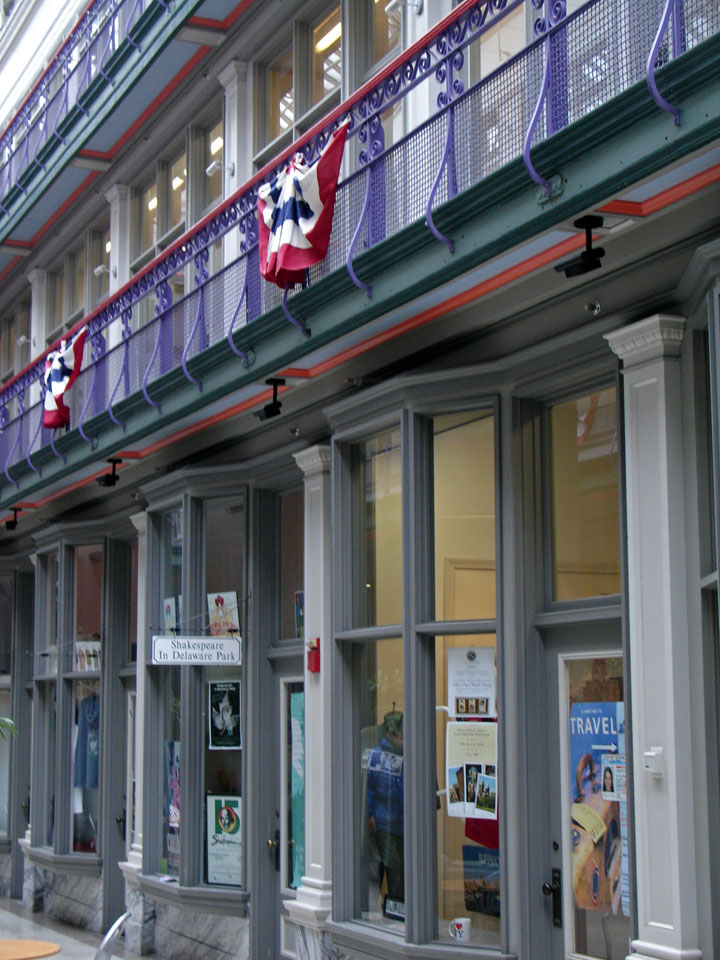
Market Arcade
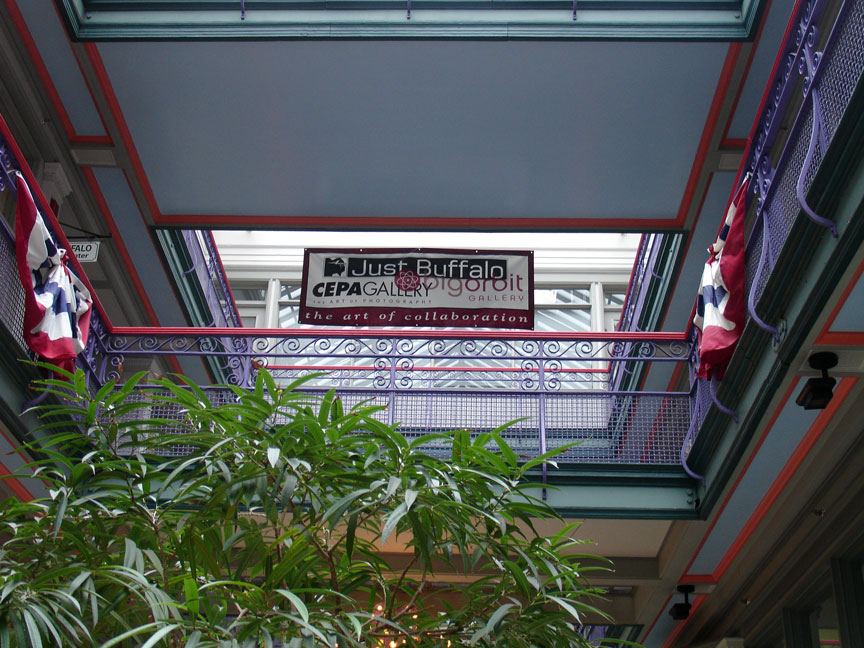
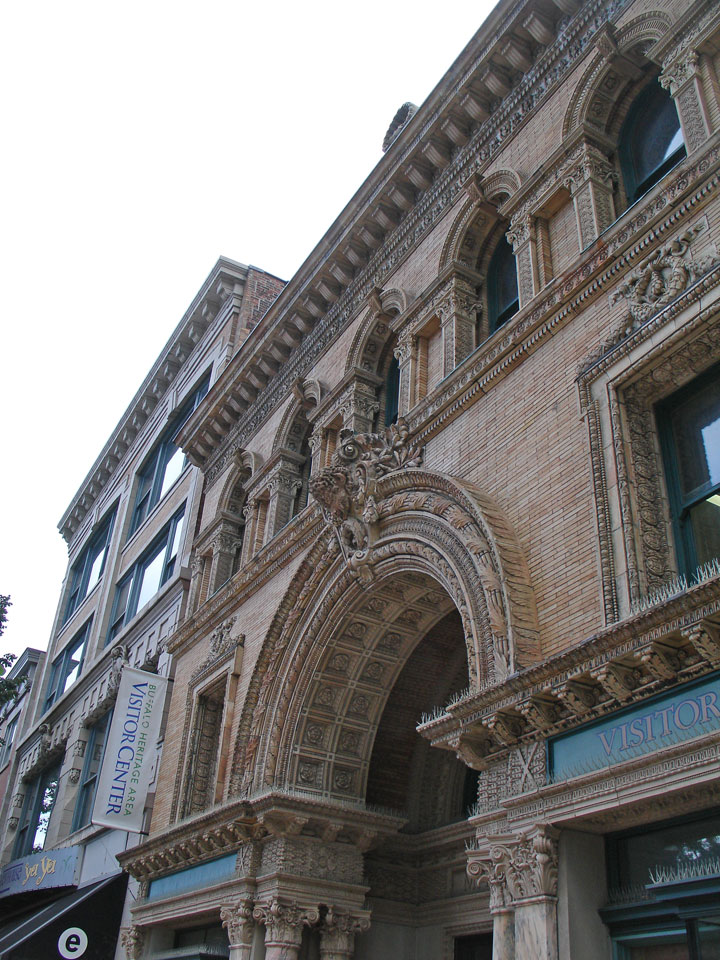
The Olmsted Park and Parkway System is the hallmark of Buffalo's many green
spaces. Three-fourths of city park land is part of the system, which comprises
six major parks, eight connecting parkways, nine circles and seven smaller
spaces. Begun in 1868 by Frederick Law Olmsted and his partner Calvert Vaux, the
system was integrated into the city and marks the first attempt in America to
lay out a coordinated system of public parks and parkways. The Olmsted designed
portions of the Buffalo park system are listed on the National Register of
Historic Places and are maintained by the Buffalo Olmsted Parks Conservancy.
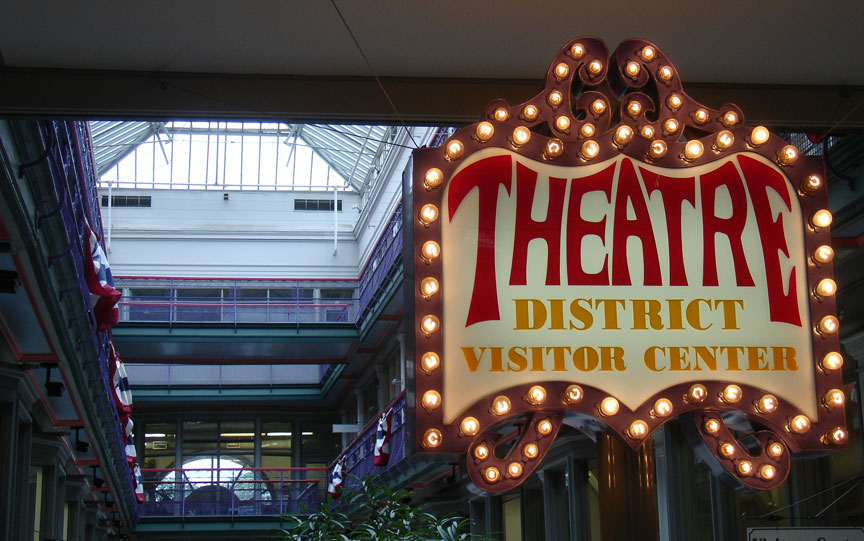
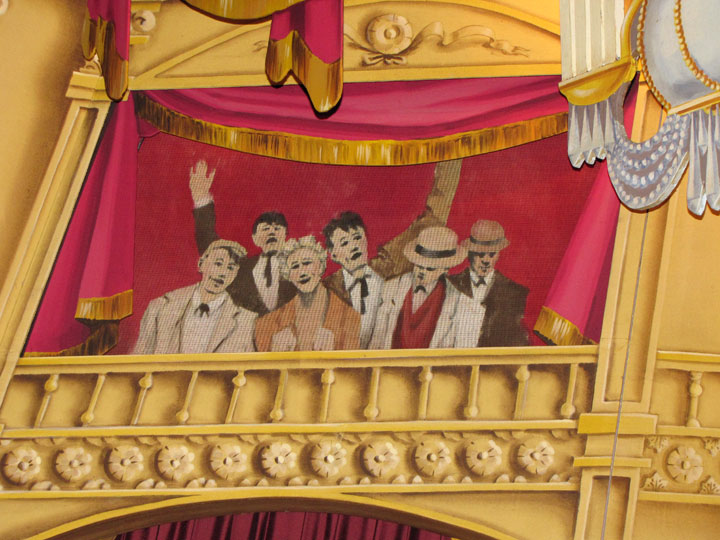
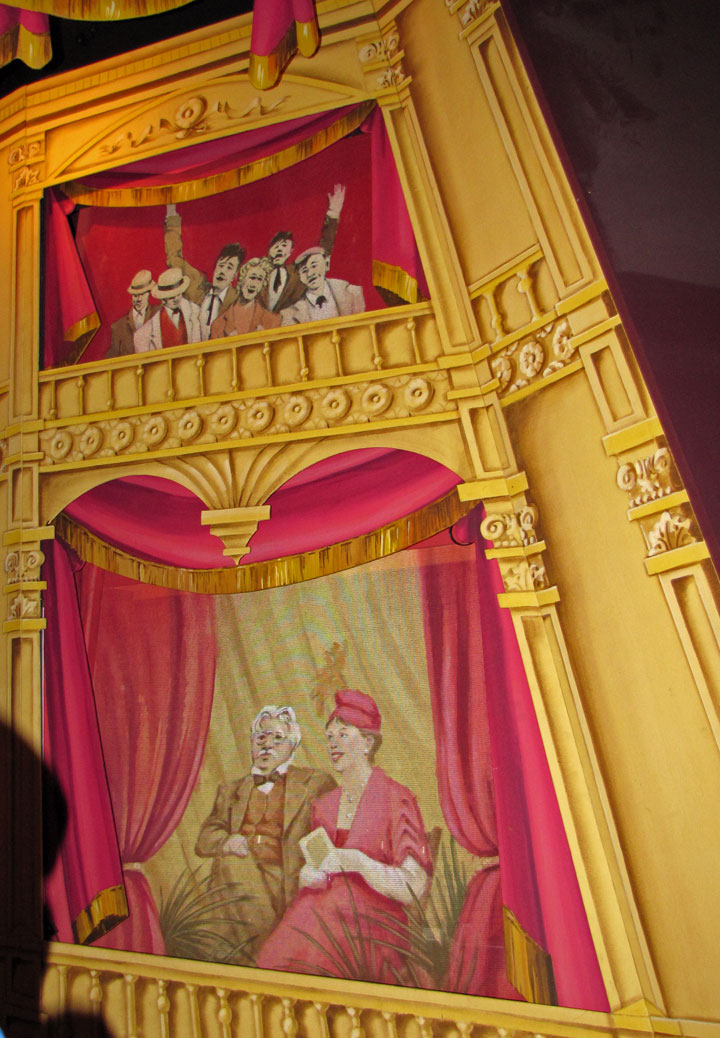
Situated at the confluence of Lake Erie and the Buffalo and Niagara Rivers,
Buffalo is a waterfront city. The city's rise to economic power came through its
waterways in the form of transshipment, manufacturing, and an endless source of
energy. Buffalo's waterfront remains, though to a lesser degree, a hub of
commerce, trade, and industry.
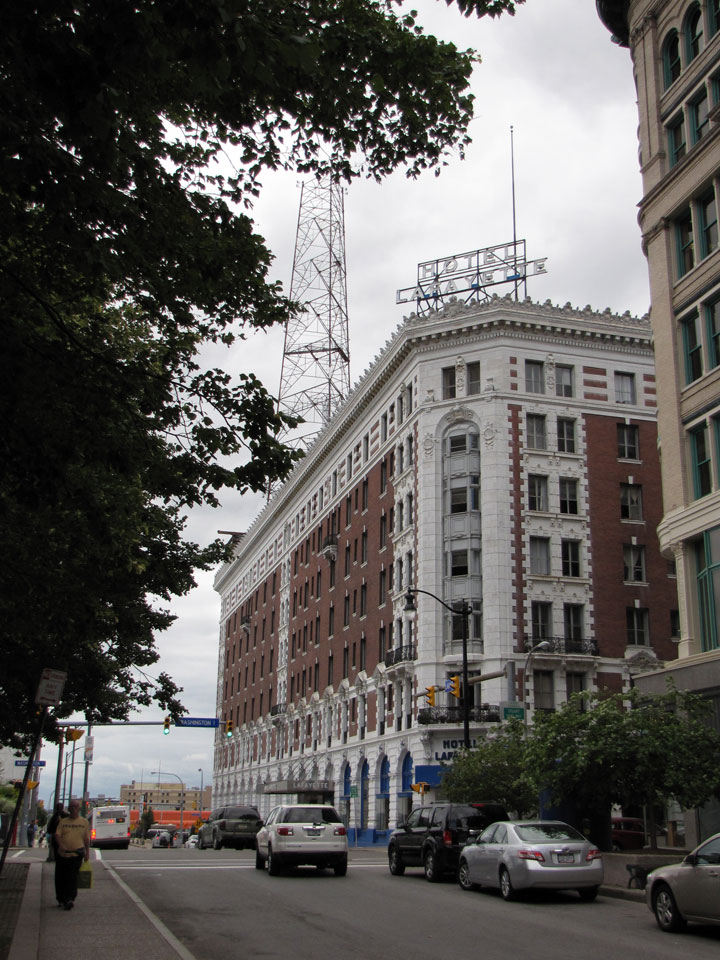
Lafayette Hotel
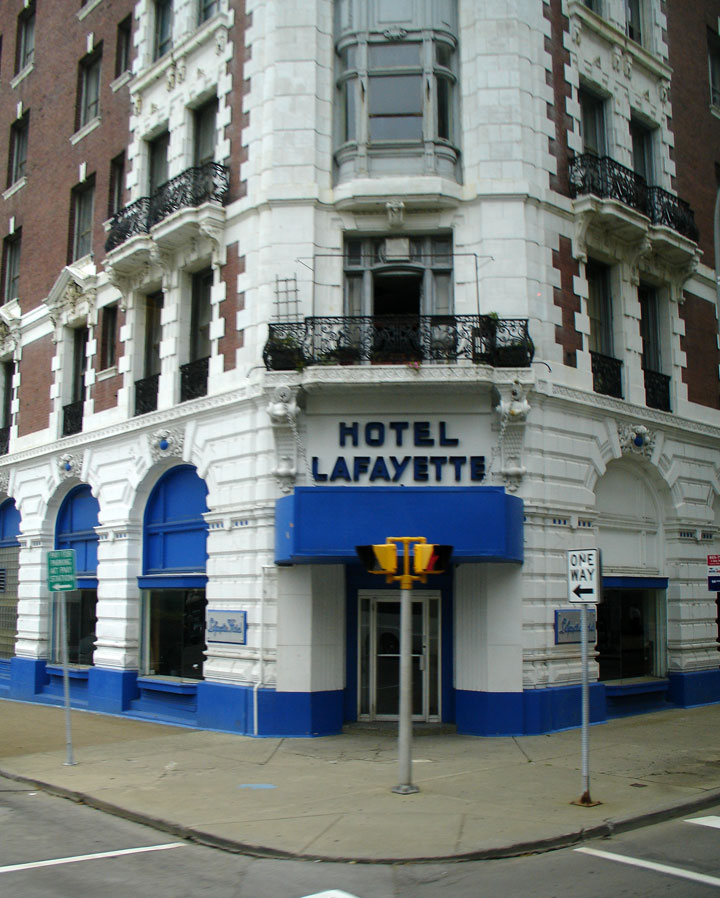
As of 2009, a significant portion of Buffalo's waterfront is being transformed into a focal point for social and recreational activity. Recently excavated and rewatered is the Erie Canal Commercial Slip, which is the original western terminus of the Erie Canal System. This is intended to revitalize the original Erie Canal Harbor, with shops, eateries, and high-rise condominiums planned. Buffalo's intent is to stress its relatively architectural and historical heritage, creating a tourism destination.

Buffalo Place
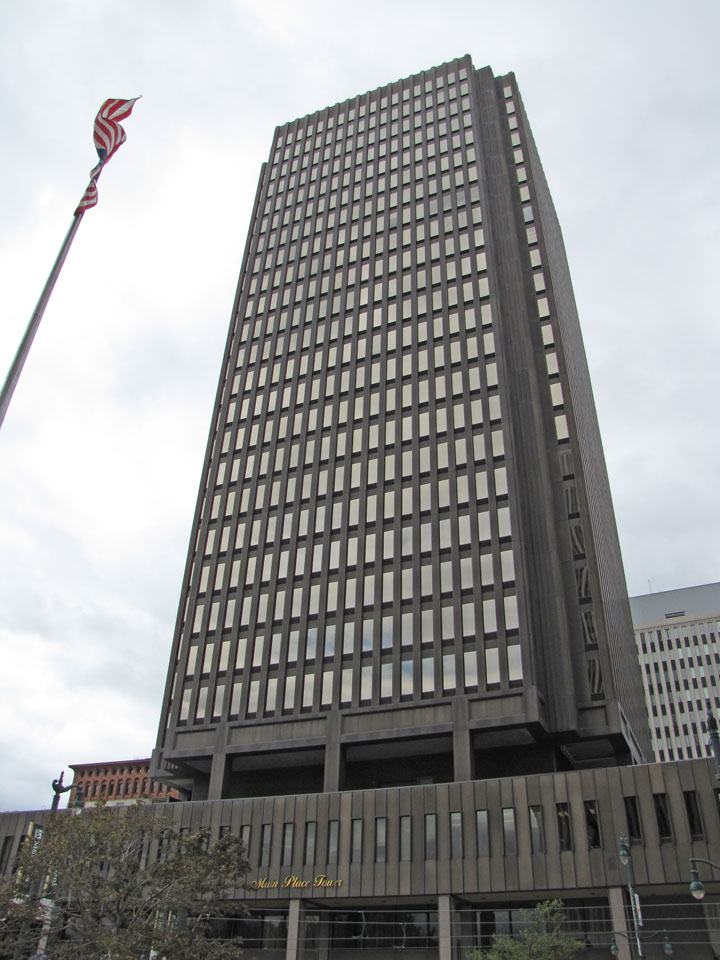
Main Place Tower
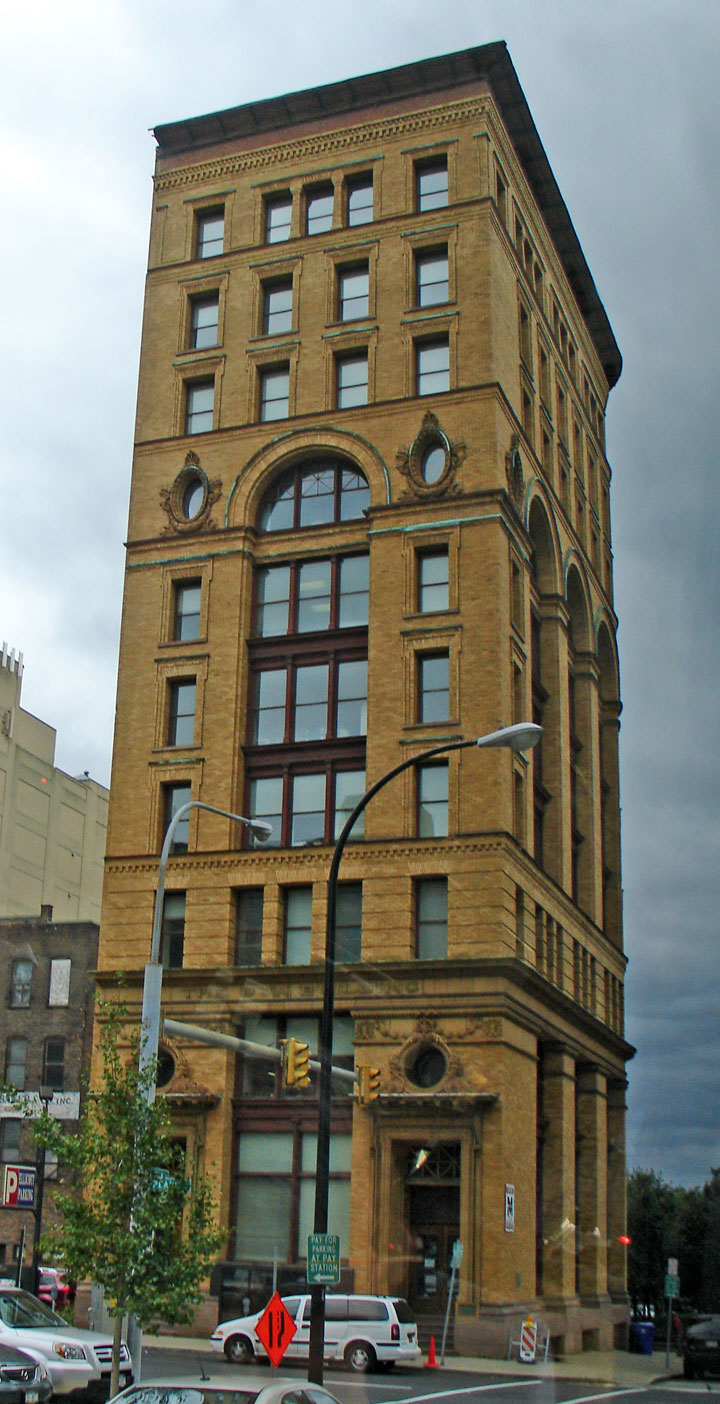
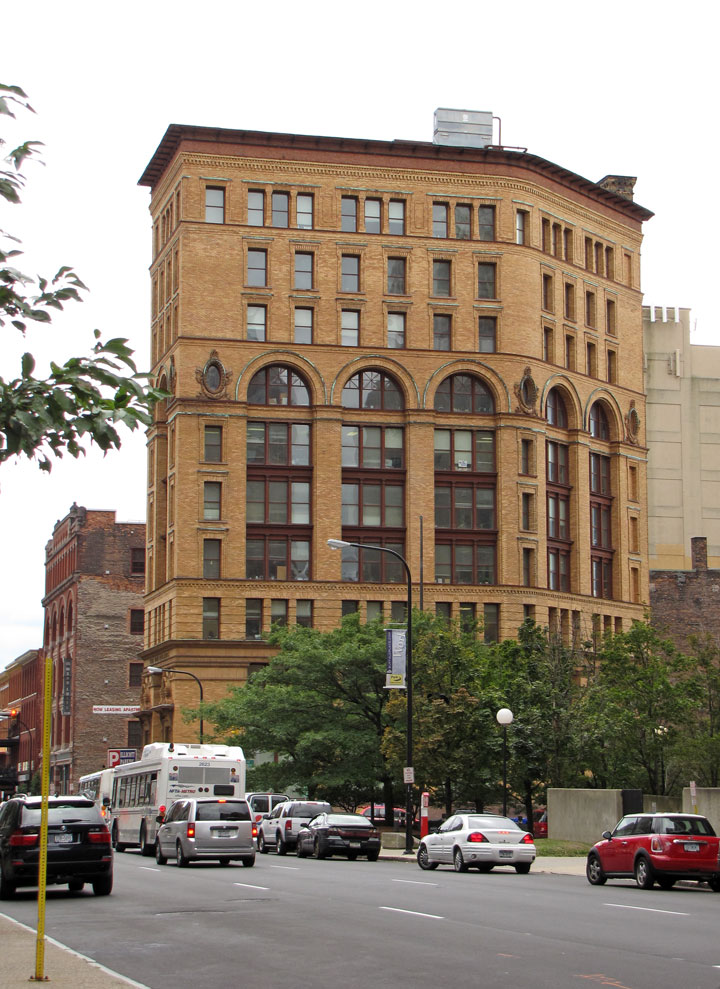
The New York Times has declared that Buffalo is one of the top cities in America for architecture. Approximately 80 sites are included on the National Register of Historic Places. All of the major American architects of the 19th and early 20th century built masterpieces in Buffalo, most of which are still standing. They include:

Avenue laid out by Olmsted
The country's largest intact parks system designed by Frederick Law Olmsted and Calvert Vaux, including Delaware Park. Buffalo was the first city for which Olmsted designed (in 1869) an interconnected park and parkway system rather than stand-alone parks.
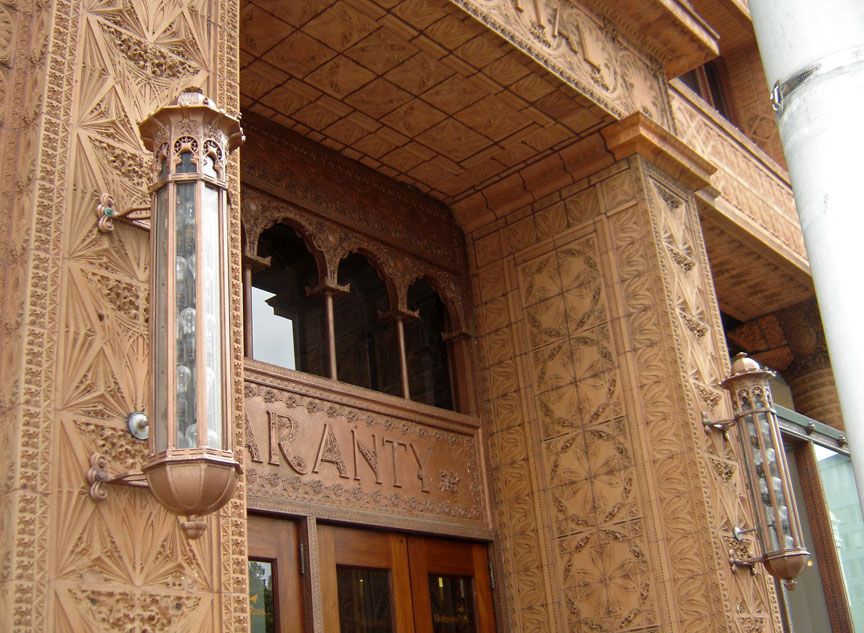
Guaranty Building
The Guaranty Building, by Louis Sullivan, was one of the first steel-supported, curtain-walled buildings in the world, and its thirteen stories made it, at the time it was built (1895), the tallest building in Buffalo and one of the world's first true skyscrapers. It is a National Historic Landmark.
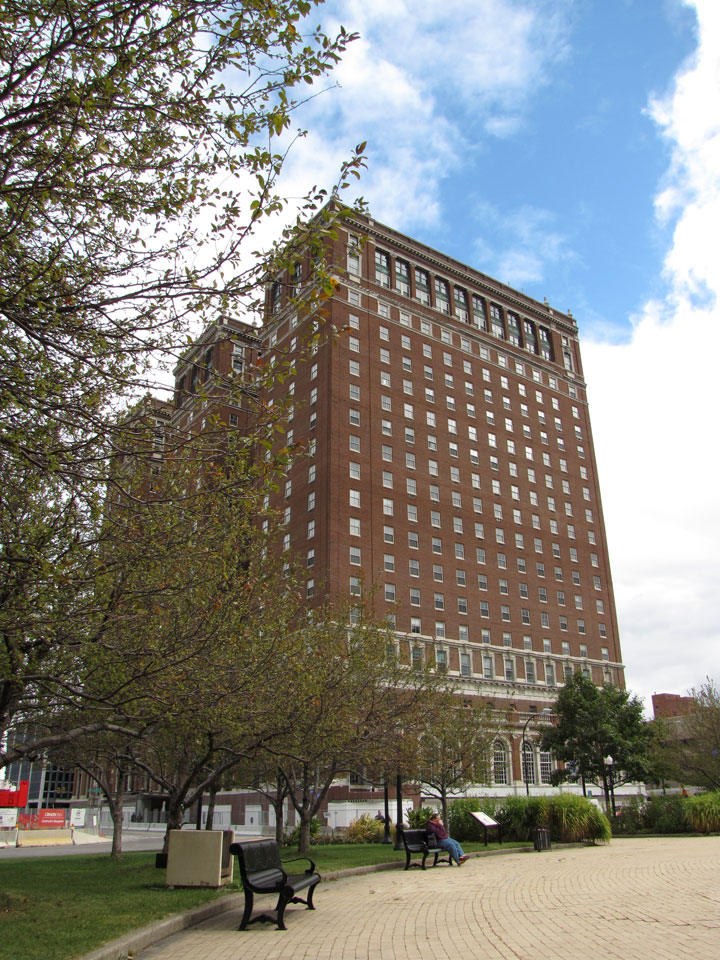
Statler Hotel
The Hotel Buffalo (originally the Statler Hotel) by August Esenwein and James A. Johnson was the first hotel in the world to feature a private bath in each room.

State Asylum
The H. H. Richardson Complex, originally the New York State Asylum for the Insane, is Richardsonian Romanesque in style and was the largest commission designed by prominent architect Henry Hobson Richardson. The grounds of this hospital were designed by Olmsted. Though currently in a state of disrepair, New York State has allocated funds to restore this treasure.

Martin House
There are several buildings by Frank Lloyd Wright, including the
Darwin D. Martin House,
George Barton House, William R.
Heath House, Walter V. Davidson House, The
Graycliff Estate, as well as the now demolished Larkin Administration
Building. Constructed in 2007 on Buffalo's Black Rock Canal is a Wright-designed
boathouse originally intended, but never built, for the University of
Wisconsin–Madison rowing team. Along as a tourist destination, it functionally
serves many Buffalo-area rowing clubs. Buffalo has more Frank Lloyd Wright
buildings than any other city except Chicago.

Buffalo City Hall
The Buffalo City Hall building by George Dietel and John J. Wade is a spectacular art deco skyscraper and is listed on the National Register of Historic Places.
Text from Wikipedia
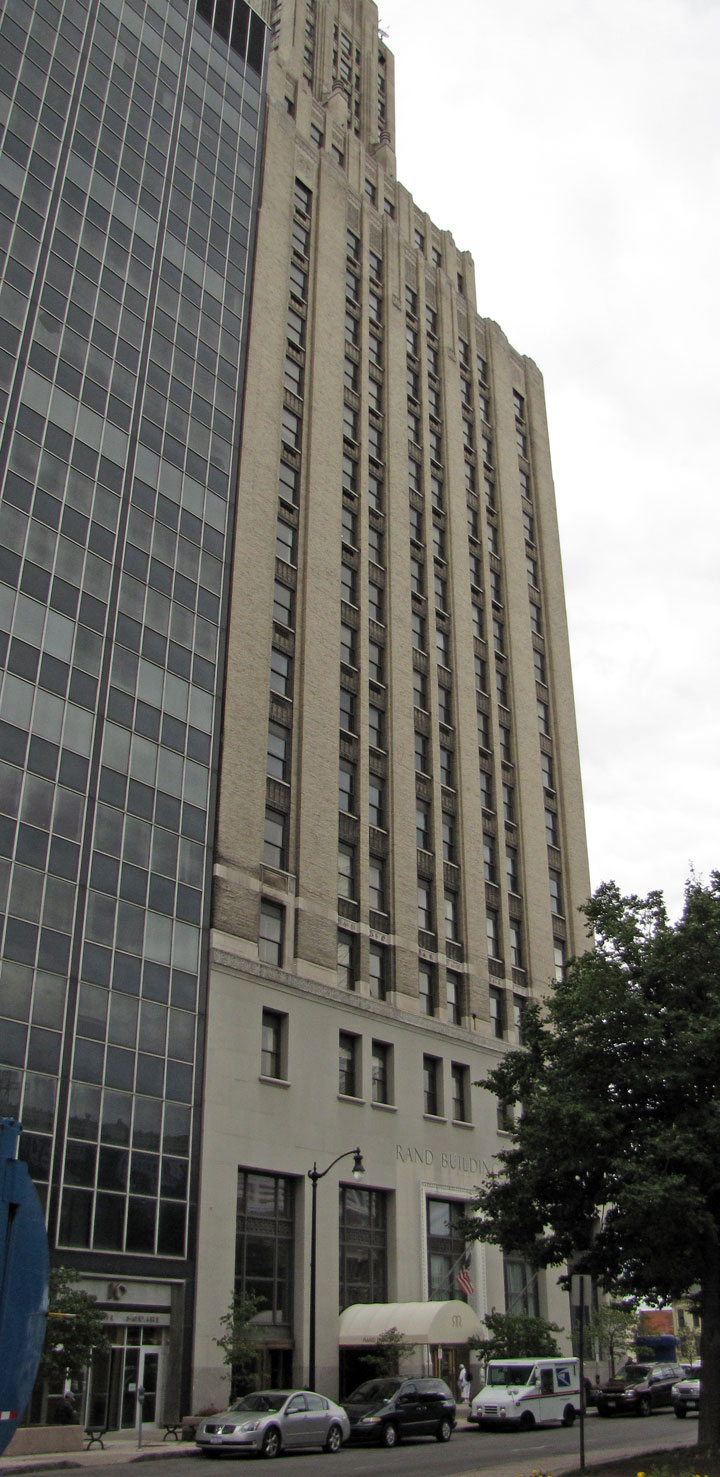
Rand Building
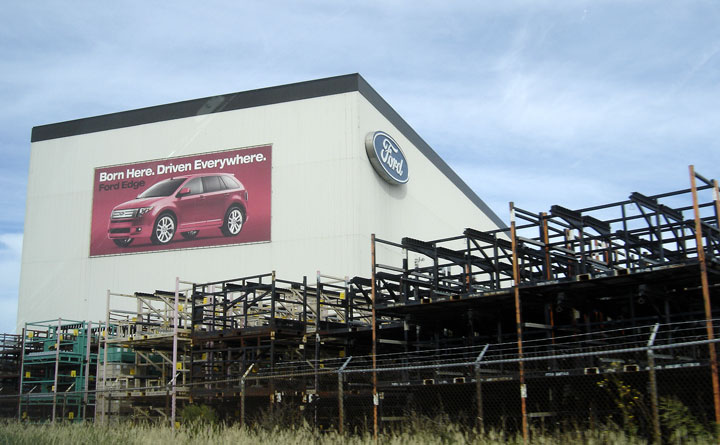
Ford Assembly Plant
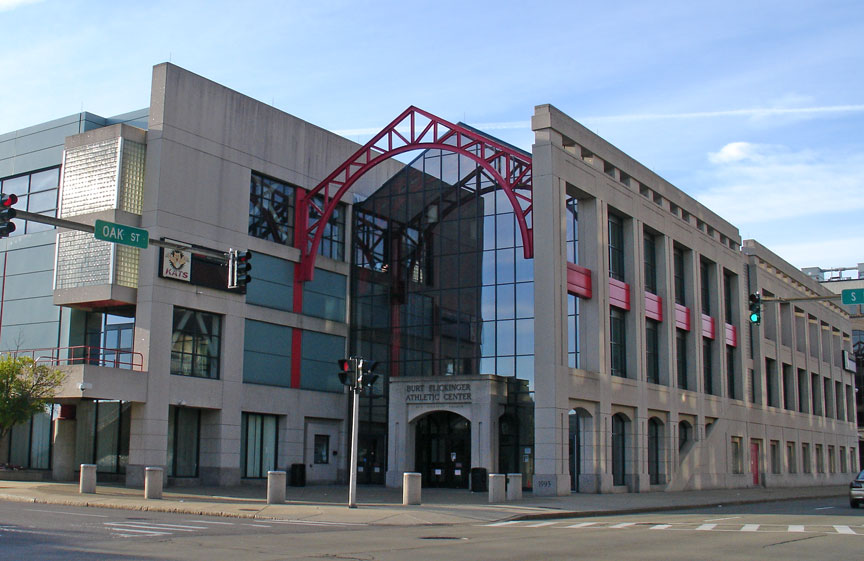
Athletic Center
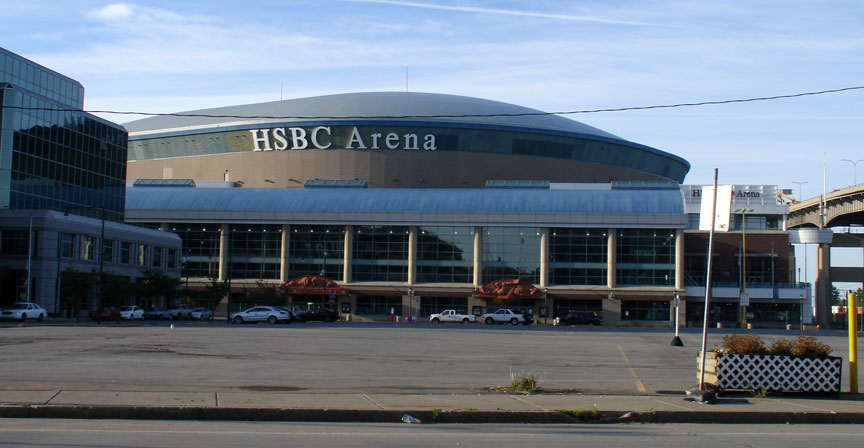
HSBC Arena

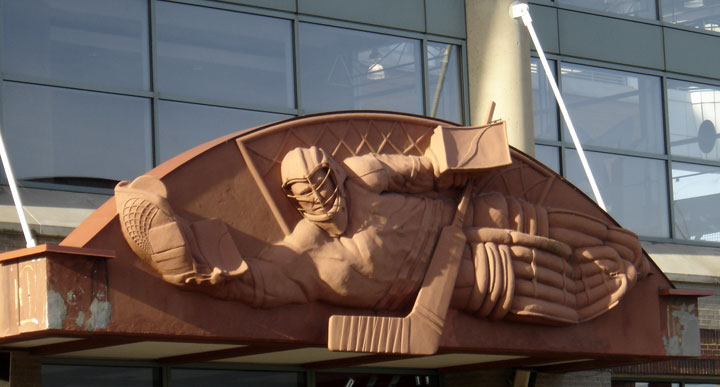
for Ice Hockey